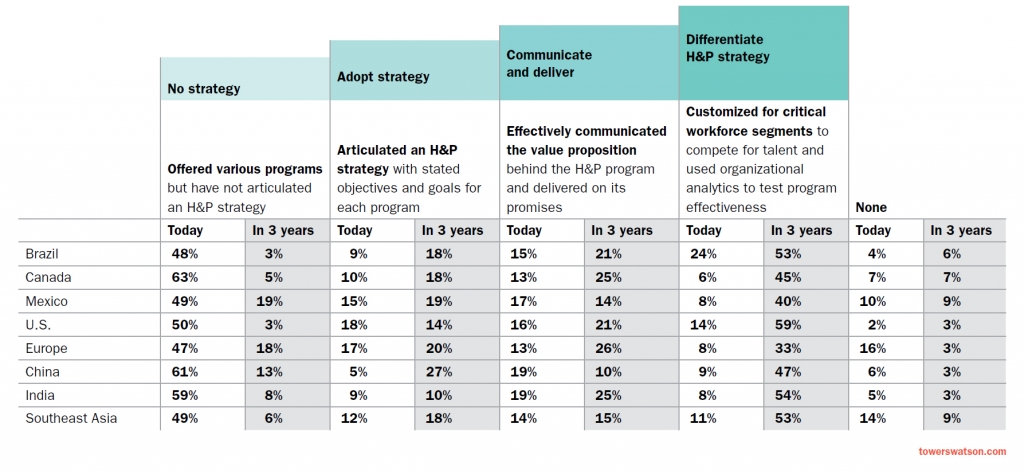The growing focus and data on employee happiness have made businesses take serious action steps toward actionable employee engagement strategies. Here’s a quick overview of some of the latest findings in employee happiness.
1. Prosocial Incentives Increase Employee Satisfaction and Team Performance
Giving does make you happier. Employers who capitalized on this key happiness driver reached promising results.
This study by Michael I. Norton & Lalin Anik (Harvard Business School), Lara B. Aknin & Elizabeth W. Dunn (University of British Columbia) and Jordi Quoidbach (University of Liège) shows how prosocial incentives help increase happiness at work.
Study results
Prosocial incentives, in the form of donations to charity, lead to happier and more satisfied employees. Furthermore, prosocial incentives, in the form of expenditures on teammates, lead to better performance in both sales teams and sports teams.
The study discovered that face-to-face giving has a larger impact on people’s happiness than giving at a distance: the closer the link between giver and receiver, the bigger the benefits.
“We suggest that rather than force employees to make a losing tradeoff between social life and work life, employers can coopt this tradeoff and focus instead on using prosocial incentives to create a more altruistic, satisfying, and efficient workplace.”
2. 81% of Small Business Employees Are Satisfied with Their Jobs
A recent online survey conducted by The GfK Group for GFI Software focused on employee job satisfaction in US small businesses.
Study results
What they found out is that 81% of small business employees are satisfied with their jobs. This percentage is higher than the 68 percent of all full-time US employees surveyed in a Rutgers University Heidrich Center for Workforce Development study of January 2013.
They also took a look into management practices, as a job satisfaction indicator. Six in 10 employees gave their management team an A or B, with only 3 percent giving a failing grade to their bosses. Here’s a great infographic on this study.
3. U.S. workers generally like their jobs, but believe there is room for improvement; Canadian workers are the most content, followed by the Dutch
Another study by GfK, this time with Monster.com, follows the international work attitude gap, comparing country-level job satisfaction.
Study results
| Country | Love it/Like it a lot | Don’t Like it/Hate It | ||
| 1. Canada | 64% | 7% | ||
| 2. Netherlands | 57% | 7% | ||
| 3. India | 55% | 5% | ||
| 4. US | 53% | 15% | ||
| 5. UK | 46% | 12% | ||
| 6. France | 43% | 9% | ||
| 7. Germany | 34% | 10% | ||
Regarding the US, here’s what employees answered to the question “Which of the following best describes how much you love your current job?”
22% Love it – Would do it for free
31% Like it a lot – You enjoy what you do, but you could like it more
31% Like it – You like it well enough for now
6% Don’t like it – You think you could do better
10% Don’t love it at all – but it is a necessary evil
4. Employees are happier in a mission-driven company
Chris Groscurth, Ph.D., Senior Practice Consultant fir Gallup took a deeper look into a key employee happiness driver: meaning.
Study results
Gallup’s research reveals that margin and mission are not at odds with one another at all, but the opposite. Here’s what their meta-analysis of 49,928 business units across 192 organizations shows:
“As employees move beyond the basics of employee engagement and view their contribution to the organization more broadly, they are more likely to stay, take proactive steps to create a safe environment, have higher productivity, and connect with customers to the benefit of the organization.”
5. Strengths-based management approach is the best way to improve the employee-manager relationship
Research by Gallup shows that employee engagement increases when managers focus on employees strengths. 1,003 U.S. employees were asked to determine how much they agreed with two statements: “My supervisor focuses on my strengths or positive characteristics” and “My supervisor focuses on my weaknesses or negative characteristics.”
Study results
One-quarter (25%) of American workers fell into the “ignored” category, and 40% of these employees were actively disengaged. Managers who focused on their employees’ weaknesses cut active disengagement roughly in half, to 22%, proving that even negative attention is better than no attention at all.
For the 37% who agreed that their supervisor focused on their strengths, active disengagement collapsed to 1%. Nearly two-thirds (61%) of these employees were engaged, twice the average of U.S. workers who are engaged nationwide (30%).
“This suggests that if every company in America trained its managers to focus on employees’ strengths, the U.S. could easily double the number of engaged employees in the workplace.”
Susan Sorenson, writer and editor at Gallup
6. The business cost of each disengaged employee in an organization is in the neighborhood of $10,000.
The 10th annual survey by the Queen’s School of Business Centre for Business Venturing (QCVB) and Aon Hewitt highlights the economic cost of employee disengagement.
Study results
The study reveals that companies with high employee engagement rates achieve:
• 65% greater share-price increase
• 26% less employee turnover
• 100% more unsolicited employment applications
• 20% less absenteeism
• 15% greater employee productivity
• Up to 30% greater customer satisfaction levels
“The business cost of each disengaged employee in an organization is in the neighborhood of $10,000.”
Einar Westerlund, QCVB Project Development Director
7. With Europe as a notable exception, most organizations around the world plan to develop a Health & Productivity strategy within the next three years
Happiness comes from both physical and emotional well-being. This study by Tower Watson analyzes the business value of a healthy workforce.
Study results
Although most companies around the Globe don’t yet have a Health & productivity strategy, there is an increased tendency to focus on health as an organizational strategy. Such a strategy is starting to be an imperative in employee retention, company branding and talent development.
“Employers globally rank stress, lack of physical exercise and obesity as the top health risks faced by their employees.”
Most of these strategies and data are not completely new to those of us who have advocated employee happiness and employee engagement in the last years.
What’s interesting is that the numbers are starting to get more and more realistic and encompass a bigger portion of the business scene. For the early majority, this may very well be the boost of credibility that employee happiness needed to be taken seriously.
We’ve also been observing the latest trends in employee engagement, which you can browse through in this SlideShare – The State of Employee Engagement in 2015:
Image via StockSnap.io under C.C.0 license







Employee happiness is key to getting the best out of people! Happy employees are more productive and the facts shown here display that for us all to see. Make employee happiness a workplace goal and the rest — engagement, productivity, success — will follow shortly behind. I recently read that of the employees who thought about searching for a new job in the past year, 59 percent don’t feel adequately appreciated at work. A simple “thank you” can therefore go a long way. We spend more than half of our waking hours at work, so establishing a workplace culture that aims to motivate, support, and inspire employees is essential to creating a happy workforce.